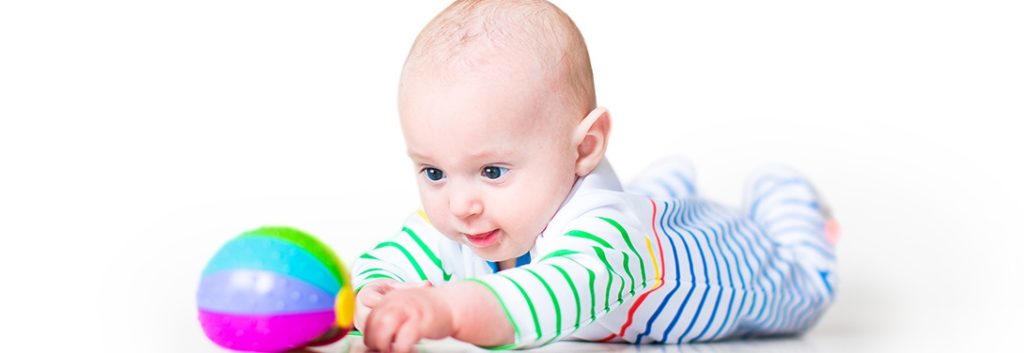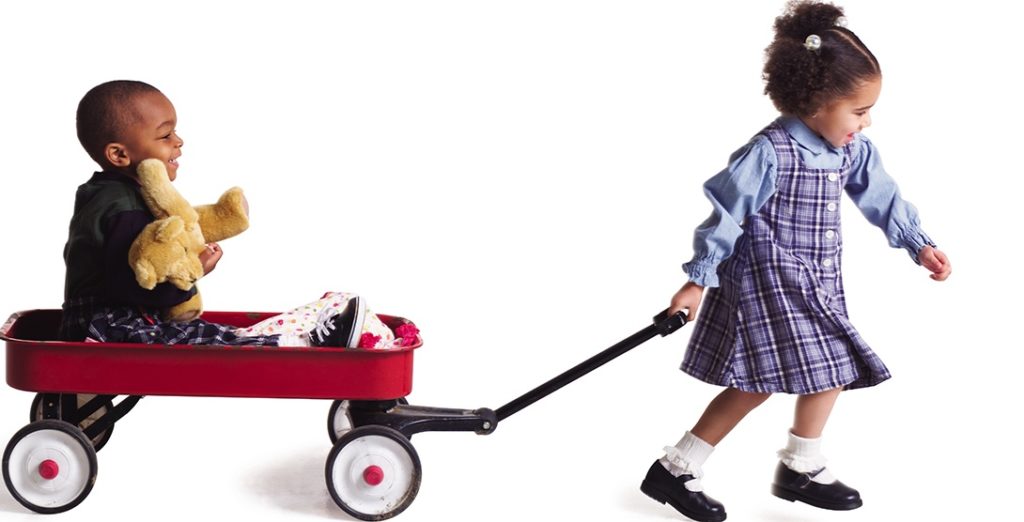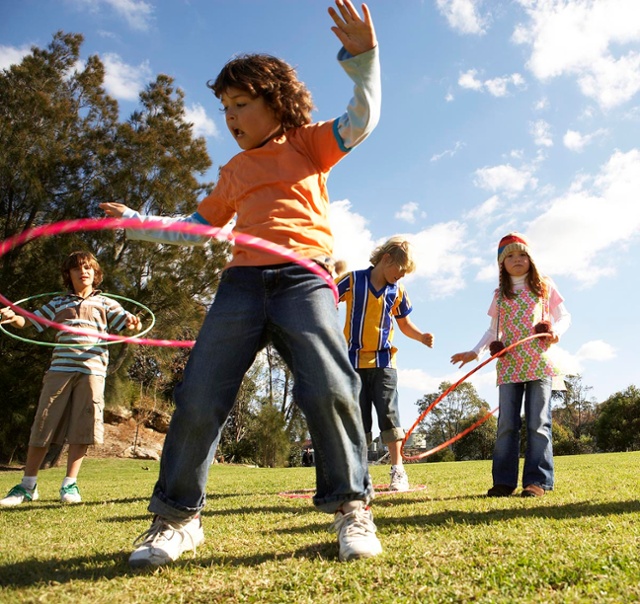How to Support Active Play: Physical Activity Ideas for Kids
Children age 5 years and older need at least 60 minutes of physical activity per day, and children under 5 may need even more. Daily activity serves many purposes in children’s health and development:
- Supports brain development and increases children’s ability to learn.
- Builds and maintains healthy bones, muscles and joints.
- Promotes good sleep.
- Cultivates independence.
- Encourages development of motor skills and social skills.
- Helps maintain healthy weight.
Take a look around your classroom, daycare, and home. Do these environments encourage age-appropriate physical activity? Here are some easy physical activity ideas for kids at specific age levels.
Birth to 11 months
Provide engaging objects and use them to encourage movement:

- Rattles
- Mobiles
- Board Books
- Unbreakable mirrors
- Balls
- Dolls
- Solid furniture for pulling up, standing and cruising
Have tummy time 2-3 times per day. Place favorite toys or objects nearby to encourage reaching and exploring. Be active with infants—get on the floor face-to-face to talk, sing and play. Play simple games/songs that use a variety of movements, such as “Pat-a-Cake,” “This Little Piggy” and “Wheels on the Bus.” Limit time in confining equipment like seats, swings and carriers.
1 to 2 years
Toddlers need 60-90 minutes or more of physical activity per day. It doesn’t need to be all at once, or the same activity; try being active in 10 minute increments. Offer a wide range of equipment to support active play:
- Large soft balls, bean bags and similar objects that children can roll, throw and kick
- Push toys such as shopping carts, doll carriages or lawn mowers
- Wagons that can be filled with objects and pulled
- Riding toys
- Low climbers, steps, ramps, and do-it-yourself obstacle courses
Limit the use of strollers. Encourage toddlers to walk short distances. Involve them in active tasks like setting the table, picking up toys, sorting laundry, washing the car. Encourage balance by walking a “balance beam” painted or taped to the floor (or drawn with chalk outside). Provide opportunities to jump using mats or pillows, or over lines on the floor. Play games that incorporate music, imitation and simple directions such as animal movements, follow the leader or dancing with scarves.

3-5 years
Preschoolers need 90-120 minutes of physical activity per day. Play equipment should include many of the same items used by toddlers, as well as:
- Larger variety of balls and bean bags
- Old boxes or tunnels to crawl through
- Tricycle or other riding toys
- Access to climbing equipment at a playground
Have a “movement parade”: march around the room or outdoors and call out different activities for children to try (for example: twirl, hop, gallop). Go on a nature hike: find acorns, pine cones, bird feathers, shiny rocks, etc. Play simple singing games with movement, such as “The Hokey Pokey,” “Head, Shoulders, Knees and Toes,” and “If You’re Happy and You Know it.” Encourage running games like Freeze Tag and Red Light-Green Light. Help children at these ages learn to recognize the faster heart rate and deeper breathing that indicate healthy vigorous activity.
6 years and up
Children and teens need at least 60 minutes of physical activity daily. Play equipment might include:

- Bicycles
- Jump ropes
- Hula hoops
- Yoga mats
- Balance beams
- Hopscotch
- Access to monkey bars, rock climbing walls
Play group games that involve movement, such as charades, Frisbee, catch. Try games that incorporate strength and coordination, such as relay races, obstacle courses, a variety of “tag” games, tug-of-war. Play games that include music, imitation and simple directions, such as “Simon Says,” and let children be the leaders. Try yoga, dance, Zumba or tai chi.
Child care providers, schools, youth service organizations, places of worship, families and even employers are helping children in central Indiana live healthier lives. Are you ready?
MAKE THE LEAP AND JOIN US.
Topics: Outdoor Activity, Physical Activity
Subscribe for more
Want more ideas for healthy schools, workplaces, child care providers, and families? Subscribe to our blog for weekly tips delivered right to your inbox!
Ways your child care policy can support recommended screen time for kids NEXT »
New nutrition standards encourage healthy eating for children, infants
